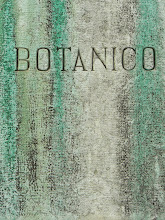 Raiders of the lost parks
Raiders of the lost parksHelen Davies joins the urban guerrillas who want to change the world — by landscaping it
"Meet 8-ish on the Lambeth Road," the text read. "Tree pit as yet undecided. Directions for my night's illicit rendezvous — or the G-spot as it is known - amid the tower blocks of south London are becoming dearer. The adrenaline kicks in. Am I ready to flout convention, break the rules, take part in what some would argue is a criminal activity and go, er, gardening?
Another test: "Change of location. Go down the main road, turn left into the estate, past the sunken children's playground You'll see the patch of grass. Meet us there." A few people begin to appear in the half-light; their gloves, Wellingtons, warm clothes and eager smiles mark them out as fellow warriors. Their leader is Richard Reynolds. Under the cover of darkness, Reynolds, 30, a son of botanical Banksy, and other like-minded citizens have set about transforming neglected patches of mainly inner-city land with daffodils and sun (lowers. Reynolds, polite, clean and terribly middle-class, arrives in a sporty MG, a bag of compost tied to the roof, with pots of lavender, Paris daisies and tools piled into the boot.
I borrow gloves and join the seven-strong troop. The target is small: two circular sites, no more than 10ft across, bordered by wilted daffodils. "It's about fighting the filth with forks and flowers." Reynolds says as we start lugging under the orange glare of street lamps and the bluish television haze from the council estate in Southward. "There is no manifesto. Having some greenery and creating a better environment has many positive benefits."
Reynolds's desire to garden was born four years ago when he cleaned the neglected planters outside his own south London tower block. Today, they provide a blooming oasis in the barren landscape el 1970s concrete. Since then, he has led his own troop of guerrillas in the capital.
Details of any digs are posted on a global online forum, http://www.guerfillagardening.org/. All recruits who sign up to the website receive a troop number: Richard is 001 and I'm 2233. Plants are grown from seed or cuttings from other people's gardens, or bought thanks to cash donations.
As we work in compost to add nutrients to the soil, pull out rubbery bits of old roots and squabble over the one and only trowel, it becomes clear that my fellow guerrillas arc- not your usual paramilitary combatants. There's a debate about the planting arrangements — should the daisies be in clumps of two or split up? Is that too messy or too twee? Is there room for dianthus and lithodora?
Swapping fork for trowel, I start gouging out soil to make room for some Lavandula augustifolia. Lyla (whose troop number is 1046) works in fashion textiles. She explains how to "tickle" up the roots to encourage them to take hold. I'm beginning to enjoy myself - the last time I did any gardening. I was 10 years old. I don't even have a suitable windowsill to tend to a few pot plants back at my rented flat.
Christina (037), a City analyst, tells me why she's taken up the struggle. "I don't have a garden," she says. "I enjoy being outside, learning about plants and at the same time giving something back." Despite the slowdown, houses are still too expensive for many Londoners — and so, consequently, is a garden. Allotments- are as precious as a place at a good state school and, for some people, the only hope is to garden on someone else's land.
The first modern skirmish took place in an abandoned lot in New York in the 1970s, but the movement's history dates to the 17th century. The first recorded act of guerrilla gardening took place on a Surrey hill in 1649, when the Diggers, founded by Gerrard Winstanley, planted vegetables near Cobham. Today, there are groups of activists from the Wirral to Wiltshire, Cornwall to Cambridge. In Crewkeme, Somerset, Ben (2676) tends to his maize in an abandoned tub outside his local supermarket. In Wales, Paul (2207) secretly plants oak saplings in copses.
After less than two hours, we stand back to view our work. The circles of bare earth are now patterned with greenery and the scent of lavender lingers in the air as the plants get their first watering. One local resident says "Thank you" and promises to water it.
There's the rub. It may be a fun one-night stand, but for guerrilla gardening to be more than a publicity stunt, the plants need to be maintained. As Reynolds points out. His main underground activity is collecting rubbish and weeds. "There's almost always a lone plastic bag, so you just fill it up and bin it," he says. in The Times 4 de Maio de 2008
FOTO: canteiro de girassóis criado por uma equipa de "Jardinagem de Guerrilha" perto do Parlamento em Londres.



Sem comentários:
Enviar um comentário